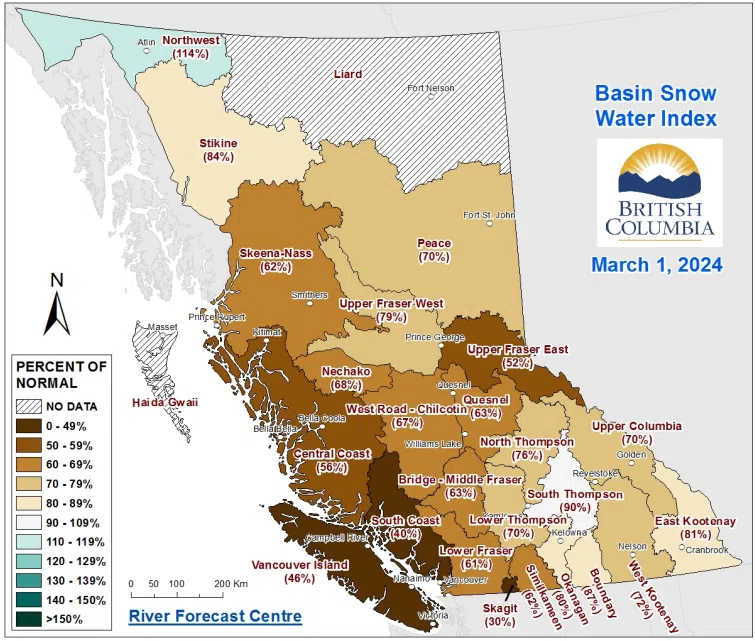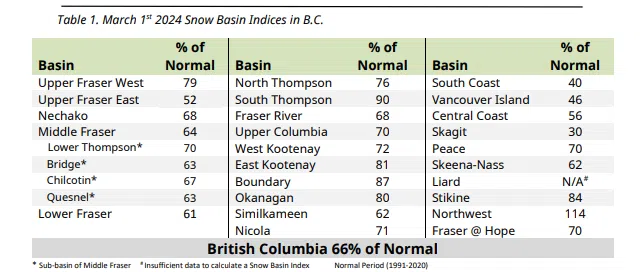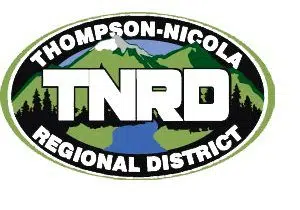
A map at the various snowpacks across B.C. as of March 1, 2024. (Photo via BC River Forecast Centre)
New data from the BC River Forecast Centre shows that while there has been some improvement, the risk of drought remains high as the March 1 provincial snowpack is the second-lowest on record.
David Campbell, the head of the B.C. River Forecast Centre says the provincial snowpack is at 66 per cent of normal, as of March 1. That is up from 61 per cent of normal from last month, but way below 2023 levels when the March 1 snowpack was sitting at 91 per cent of normal.
“This is tied for the second-lowest provincial March 1 snowpack that we’ve seen,” Campbell said. “The historic low is in 1977 where we had 53 per cent of normal. Then we saw in 2001 similar to what we have right now, 66 per cent.”
“Very low snowpacks below 60 per cent of normal in many areas including the Upper Fraser East, so areas east of Prince George, and then really the coastal areas, so the Central Coast, the South Coast of Vancouver Island, and the Skagit Valley.”
Conditions are a little better in the Kamloops area, with the North Thompson snowpack at 76 per cent of normal – up from 73 last month – while the South Thompson at 90 per cent of normal – up from 81 per cent.

A look at the various snow indices across B.C. as of March 1, 2024. (Photo via BC River Forecast Centre)
Campbell says there is an increased risk of drought in the spring and summer, because of the low snowpack levels, warm seasonal weather forecasts, and the lingering impacts of ongoing drought.
“We know that as of this time of year, the water that we’ve got stored up on the landscape in the snow is below normal and therefore the flow we anticipate that water availability is going to be lower as we come into the summer,” he said.
“We are anticipating a decrease in the seasonal flood risk in most areas of the province.”
Campbell also said while there are four to eight weeks where snow is expected, conditions are not expected to improve significantly.
“March 1 is well advanced in terms of the snow accumulation season. We typically have about 80 per cent of the snow that we see for the year on the ground right now,” Campbell said.
“We typically see the middle of April as being the peak of the snow accumulation and then we start to melt off.”
The next release of snowpack data is scheduled for April 10.
For the entire Snow Survey and Water Supply Bulletin report, go here.













